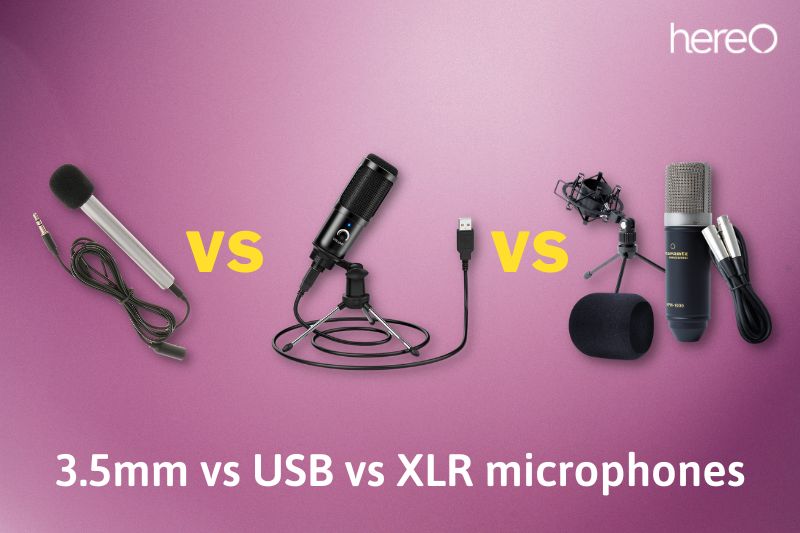One of the first choices you’ll need to make when purchasing a microphone is how you intend to connect it to your recording equipment. Microphones come in many shapes and sizes, with various designs, capabilities, and intended uses.
There are a few options here, but XLR, USB, and 3.5 mm are the most popular varieties whether recording sound at home or on the move. Today, we will take a look at the differences of 3.5mm vs USB vs XLR microphones.
Contents
What Is A USB Microphone?
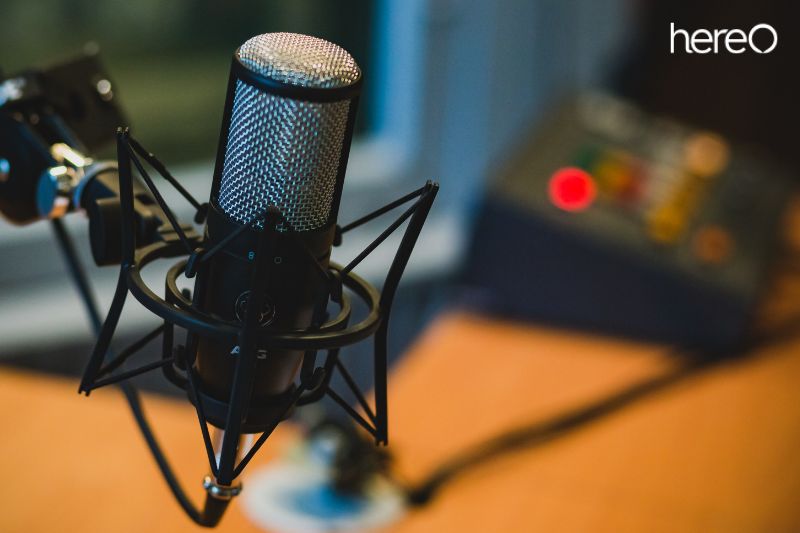
A USB microphone is a type of microphone that connects directly to your computer via a USB port. Unlike other types of microphones, such as 3.5mm or XLR, USB microphones require no additional hardware or software to work.
This makes them an ideal choice for podcasting, streaming and recording, as they are easy to set up and use.
USB microphones offer excellent sound quality and are compatible with any type of audio software. They are also typically more affordable than other types of microphones, making them a great option for those on a budget.
USB microphones come in a variety of styles, from desktop mics to large-diaphragm condenser mics, and can be used for everything from vocal recordings to instrument recordings.
It’s important to note that while USB microphones are convenient and easy to set up, they may not always provide the best sound quality.
For more professional recordings, you may want to consider investing in a more expensive microphone, such as a 3.5mm or XLR microphone. However, for most hobbyists and casual users, a USB microphone will do just fine.
What Is A 3.5mm Microphone?

A 3.5mm microphone is one of the most commonly used types of microphones today. It is small, lightweight and has a 3.5mm jack as its connection point, making it easy to transport and use with consumer-grade audio devices such as computers, smartphones and tablets.
A 3.5mm microphone is great for recording spoken audio, such as podcasts, interviews and voiceovers. It can also be used to record music and other instruments.
Compared to USB and XLR mics, 3.5mm mics are relatively affordable and easy to use but they do not offer the same level of sound quality as more expensive types of mics.
The key advantages of a 3.5mm microphone include its affordability, portability, and ease of use. However, if you’re looking for professional-level sound quality, you may want to invest in a more expensive microphone.
When shopping for a 3.5mm microphone, be sure to check the specifications to ensure that it is compatible with your audio device.
You should also consider factors such as sensitivity, frequency response, polar pattern, and maximum sound pressure level to get the best sound quality possible.
What Is a XLR Microphones?
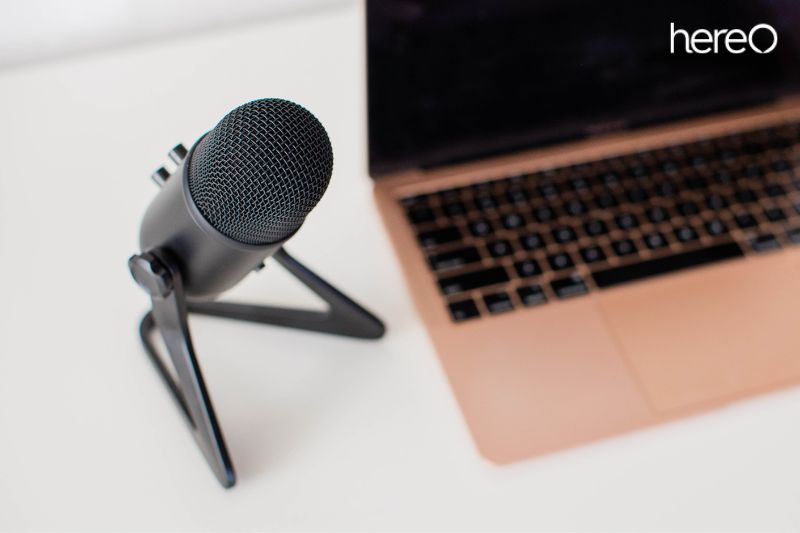
XLR microphones are professional-grade audio devices used to record and transmit sound with superior quality compared to other types of microphones.
They are often found in studio and concert hall settings, as they provide the highest level of sound quality. Although these microphones are more expensive than other options, they are a worthwhile investment for those seeking a high-quality recording.
When using an XLR microphone, users will need an additional power source. This can be either a battery or an AC adapter. Additionally, an audio interface or mixer is necessary to connect the microphone to a computer or PA system.
XLR microphones are ideal for both recording and live performance applications, as they provide precise and clear sound with minimal background noise.
3.5mm vs USB Microphone
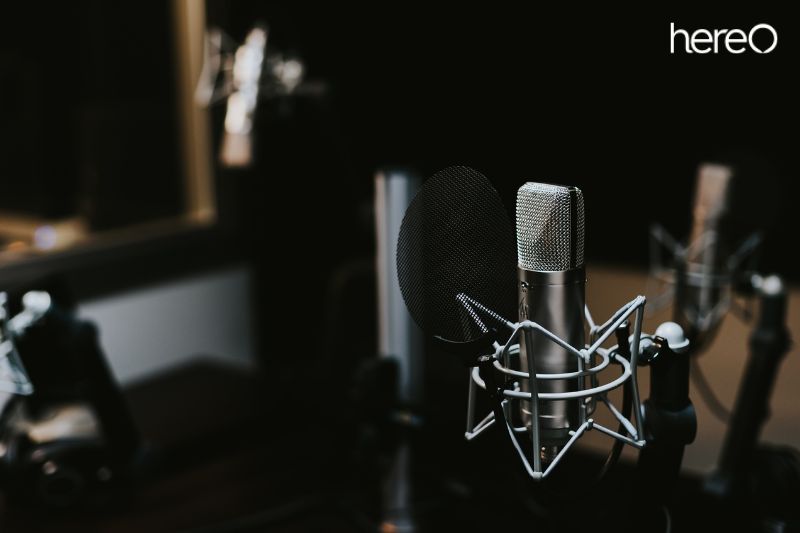
Why use a 3.5 mm microphone?
Because they provide good sound quality and are more portable than USB microphones, 3.5mm microphones are popular among musicians, podcasters, and video producers. However, keep in mind that 3.5mm microphones need unique drivers to function and are less compatible with a variety of gadgets.
3.5mm microphones feature superior sound quality and are more portable than USB microphones.
Advantages of 3.5mm:
- A 3.5 mm microphone has better quality than USB devices. You’ll have a clear, distinct voice.
- A 3.5 mm microphone can benefit from the sound card’s features, such as special effects.
- There aren’t many known latency problems with the 3.5 mm device.
- They are excellent for using instruments and performing live.
- More control will be granted over sound quality.
- They are simple to use and plug in.
Disadvantages of 3.5mm:
- The cost of 3.5 mm devices exceeds that of USB microphones.
- Through connections and wiring, they might generate static noise.
- To use the mic, you might need extra supplies.
USB VS 3.5mm Microphone: Which One Is Better?
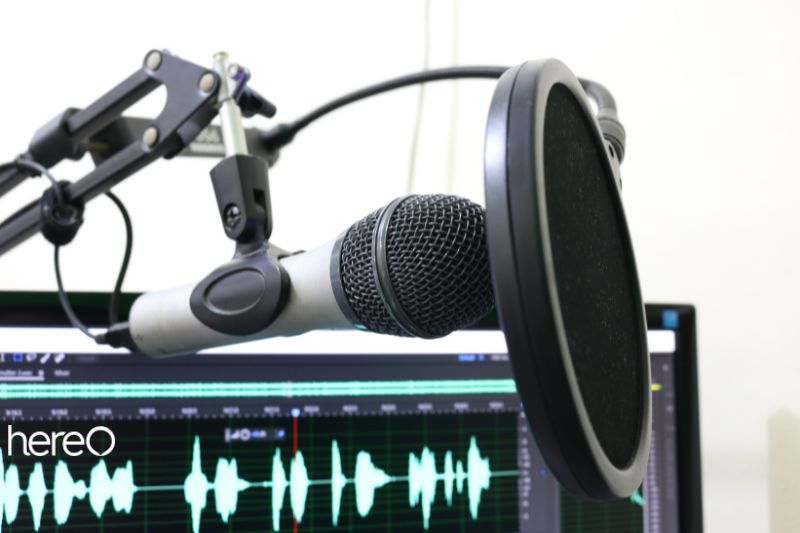
In general, USB microphones are easier to use and work with more devices, although 3.5mm microphones have greater sound quality.
A USB microphone is your best option if you’re seeking for a user-friendly choice and ease in terms of plug-and-play functionality.
On the other hand, a 3.5mm microphone can be a better option for you if you want greater sound quality and more portability.
Due to their plug-and-play features and high device compatibility, USB mics are quickly becoming the most popular kind among both amateur and professional streamers.
Main Differences Between USB and 3.5mm Microphone
The manner in which each device communicates with the computer is one of the key variations. While the USB device contains built-in processing technology that translates the signal, the 3.5 mm device outputs sound directly.
One of the most reasonably priced audio equipment on the market is the USB microphone. Although 3.5 mm microphones are frequently more expensive than USB-connected devices, the audio quality could be superior.
You can get a new sound card if there is a problem with the 3.5 mm microphone’s sound. This cannot be done with a USB microphone because it already has an internal audio adapter.
XLR vs USB Microphones
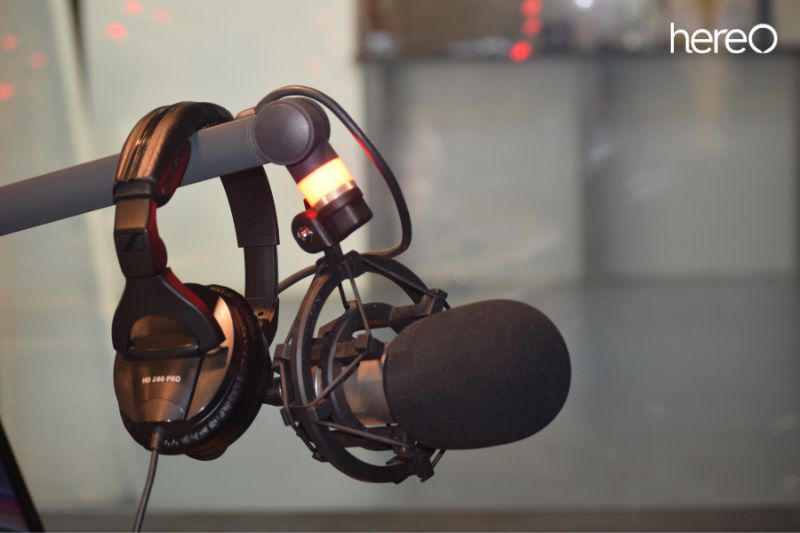
Advantages of Using a USB Mic
The main benefit of USB microphones is how easy they are to use. They are made to give exceptional audio quality while being relatively simple to use. A computer, a set of headphones, and a USB microphone are all you need to start recording.
They provide a high-quality recording solution that you can set up virtually anywhere thanks to their compact “all-in-one” design, which also makes them quite portable.
Additionally, certain USB mics may be plugged straight into a tablet or smartphone, although this is not possible with an XLR microphone, making for an even more portable arrangement.
Advantages of Using XLR Microphones
They function fundamentally very similarly to a USB microphone in terms of audio capture, but they also have certain important advantages that, depending on the type of recording you are performing, may make them more appropriate for you.
The first and most important characteristic is adaptability. Because USB microphones include the equivalent of an audio interface, you are virtually trapped into this configuration, with no way to replace or upgrade the microphone or audio interface to meet your needs.
With an XLR microphone configuration, you can mix and match the microphone, interface, and additional recording equipment as you see fit.
There is a vast world of XLR microphones to discover (as well as audio interfaces, mixers, and other recording gear), and by opting for this type of setup, you are free to experiment with different styles and features to find what works best for you.
Which Is Best For You: XLR or USB Microphone?
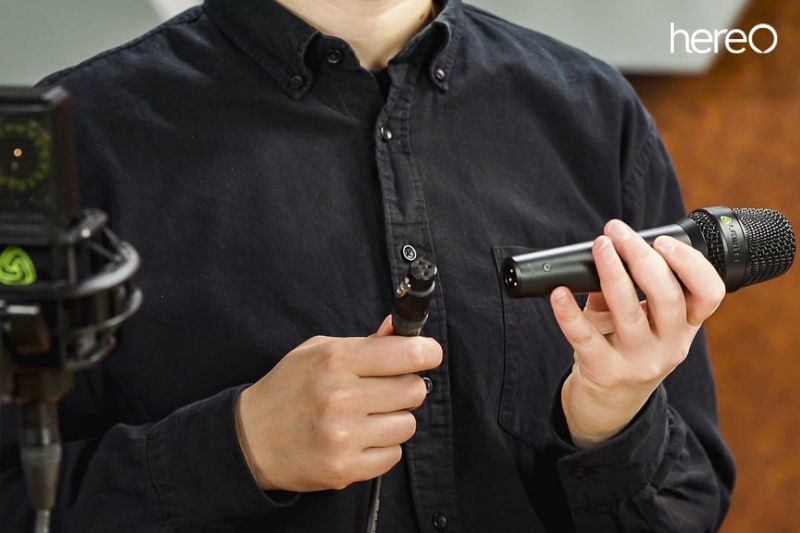
The type of recording you do will determine whether an XLR or USB microphone is best for you.
The USB microphone
If you’re just getting started with podcasting, streaming, basic music recordings, or need a microphone for video chats or other commercial applications, a USB microphone will provide excellent audio while being simple to use and inexpensive, with no further equipment necessary.
In many cases, this is all that is required to record high-quality sound, and an XLR microphone may be unnecessary.
The XLR microphone
Choose an XLR microphone system if you are starting a home studio and intend to go beyond simple guitar or vocal recordings. As you progress as a musician, you will be able to experiment with additional microphones and increase your recording setup.
Similarly, if you want to experiment with different microphone types, such as ribbon mics, small diaphragm condensers, or tube mics, an XLR setup will allow you to do so.
Also, if you need to record more than one microphone at the same time, such as recording an acoustic guitar in stereo, you’ll need an XLR setup with a multi-input interface or mixer.
FAQs about 3.5mm vs USB vs XLR microphones
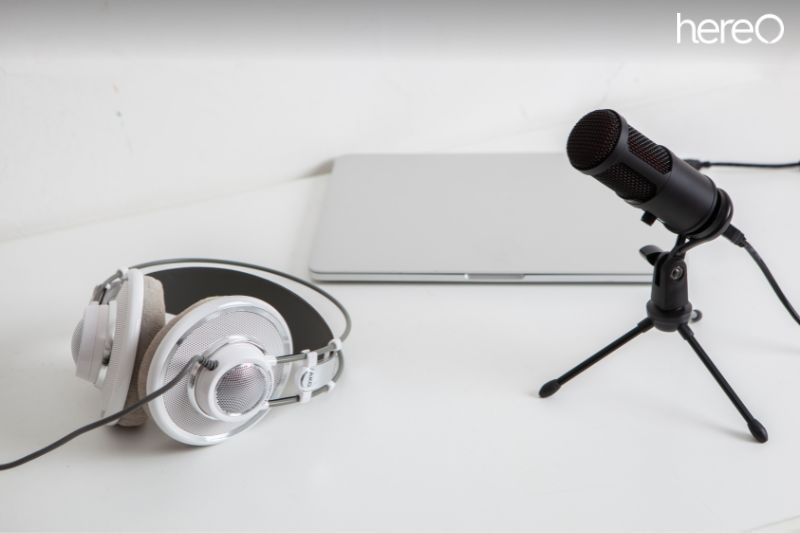
Why does XLR sound better than USB?
XLR cables are designed to reduce interference picked up by the cable itself, whereas USB cables lack that quality, meaning they pick up more noise in general.
What is USB to 3.5mm jack audio adapter?
The USB-C to 3.5 mm Headphone Jack Adapter allows you to connect devices with 3.5 mm audio plugs, such as headphones or speakers, to your USB-C devices.
Is USB or 3.5 mm better for mic?
A 3.5 mm microphone has higher quality than a USB device. Your voice will be clean and crisp. A 3.5 mm microphone can take advantage of sound card features such as special effects.
What is the difference between XLR and USB mics?
The connections are where the biggest difference lies. The three prongs of the XLR microphone must be linked to an interface before being connected to your computer.
The XLR connector won’t connect directly to your computer, therefore by interface we mean a mixer. A USB mic, however, offers a direct connection to your computer.
Conclusion
No matter what kind of recording project you’re working on, there is a microphone that is right for you. With the three popular connection types being USB, 3.5 mm, and XLR, it is important to weigh the pros and cons of each to determine which type is the best fit for your needs.
So go ahead and explore the world of audio recording to find the perfect microphone for your project!
Thank you for reading this article from hereOfamily. We hope you find it helpful.
